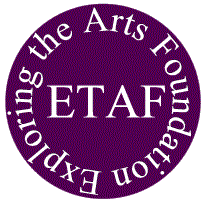|
Start This Feature At
Its Beginning |
|
|
language arts defined
What are the language arts? From one point of view, writing and speech are inseparable,
so one can attempt to answer this question for both writing and speaking in
terms of written language.
Language is the use by human beings of voice sounds and written symbols representing these sounds, in organized combinations
and patterns in order to express and communicate thoughts and
feelings. In the broad sense, language is:
- Communication by voice in the distinctively human manner, using
arbitrary sounds in conventional ways with conventional meanings;
speech.
- The system of linguistic signs or symbols considered in the abstract
(opposed to speech).
- Any set or system of such symbols as used in a more or less uniform
fashion by a number of people, who are thus enabled to communicate
intelligibly with one another.
- Any system of formalized symbols, signs, sounds, gestures, or the
like used or conceived as a means of communicating thought or emotion,
for example, the language of mathematics or sign language.
Consider writing as a form of language. Writing is built up of symbols
that represent ever-increasing units of information. English is typical, but
by no means unique:
- The most basic English symbol is the letter. As we all know, letters
build words, words phrases, phrases clauses, and clauses sentences. These symbols are basic grammatical units; that is, they are the
means by which ideas or concepts are expressed.
- Paragraphs, chapters, and
the like are not basic grammatical units; they play a different role; they
help organize ideas into units that facilitate absorption.
Ideograms, such as used in oriental
languages or in Ancient Egyptian hieroglyphs, are another kind of
linguistic symbol. Ideograms, for example a Chinese character, express an idea as a written symbol that
represents an idea or object directly rather than in the form of a particular word or
speech sound. Some languages designed around ideograms, for example Mayan,
combine phonetics with glyphs.
In the context of Language Arts, Art is:
- The field using the skills or techniques of language.
- The principles or methods governing language use.
- A craft or trade using these principles or methods.
- Skill in using language.
- A branch of learning or a university study.
The Language Arts are a collection of specific crafts,
techniques, or applied skills pertaining to the use of language for
communication. Taken as a whole, they are the skills, including reading,
composition, speech, spelling, and dramatics, taught in elementary and
secondary schools to give students a thorough proficiency in using
language.
There are a number of narrow definitions for language arts, each of which
stems from one or another of the specific ways one can approach language as
an art. All of these definitions are valid; together, they round out The
Muse's more generic definition. theyare:
- The skills and subjects surrounding the use of language.
- Subjects taught in elementary and secondary schools to give students a
thorough proficiency in using English, including reading, composition,
speech, spelling, and dramatics.
- Formal debate.
- The written representation of a system of vocal sounds and
combinations of such sounds to which meaning is attributed, used for the
expression or communication of thoughts and feelings.
- Any means of expressing or communicating, as gestures, signs, or
animal sounds, for example, body language.
- A special set of symbols, letters, numerals, rules, and the like used for the
transmission of information.
- All the vocal sounds, words, and ways of combining them common to a
particular nation, tribe, or other speech community, for example, the French
language or the English language.
- The particular form or manner of selecting and combining words
characteristic of a person, group, or profession.
- Form or style of expression in words, for example, the language of teenagers.
- The study of language in general or of some particular language or
languages.
- Linguistics: the science of language, including phonetics, phonology,
morphology, syntax, semantics, pragmatics, and historical linguistics.
- The philosophy or theory of language and communication, for example, hermeneutics, semantics, and semiotics.
- The theory of using language to communicate.
- The art of using language.
- The art of using language correctly.
|



